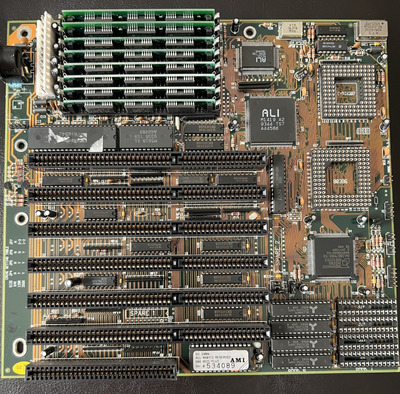Sockets on most of those price optimized micro-AT 386 boards are not for upgrading or any user use. They were manufacturing universal boards to be able to use cheapest CPU possible every day/week. CPU (and cache) were the last components mounted on the board before shipping them out.
cant use the other spot without modding or removing cpu
H3nrik V! wrote on 2023-08-19, 20:17:
H3nrik V! wrote on 2023-08-19, 20:16:
What about those soldered jumpers, JP8 and JP9, sitting between the soldered CPU and what I guess is the cache tag chip, could they maybe be something? Wouldn't mess with it without confimation from a manual, though 🤣
Oh, the manual clearly states about JP8 at least "factory setting do not alter".
jp10 goes to E13, NC on 386, FLUSH# on 486DLC. JP11 is F13 , again not connected on 386, but A20M# on 486DLC. I cant see where JP9 is going but im guessing its also for 486DLC cache handling. Curiously https://theretroweb.com/motherboards/s/jamico … 0a-486dlc-386dx has two pictures, one with jumpers and soldered 386, other has just pcb links soldered shut but also 386 and no pga socket. I dont know intricacies of 486dlc cache pumper magic, you would have to dig into one of feipoa threads.

